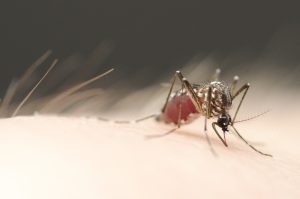New genetic tools for understanding mosquito behavior
Leslie Vosshall
The Rockefeller University, USA
Female mosquitoes require a blood meal to complete egg development, and several species have evolved a preference for biting humans. In carrying out this innate behavior, mosquitoes spread dangerous infectious diseases such as malaria, dengue, Zika, chikungunya, and yellow fever. Humans attract mosquitoes via multiple sensory cues including emitted body odor, heat, and carbon dioxide in the breath. The mosquito perceives differences in these cues, both between and within species, to determine which animal or human to target for blood-feeding. We have developed CRISPR-Cas9 genome-editing in the Aedes aegypti mosquito with the goal of understand how sensory cues are integrated by the female mosquito to lead to host-seeking behavior. We use CRISPR-Cas9 to knock-out genes of interest and knock-in markers that allow us to study and manipulate cells expressing a given gene. We adapted the Q system to Aedes aegypti and generated animals expressing the QF2 transcription factor in cells of interest. Complementing this, we have developed QUAS-responder transgenic lines that permit us to label, silence, activate, and image these neurons. Some of the questions we are currently addressing are: Why are some people more attractive to mosquitoes than others? How do insect repellents work? How are multiple sensory cues integrated in the mosquito brain to elicit innate behaviors? How do female mosquitoes select a suitable body of water to lay their eggs? Recent advances from my group in developing new tools and using these to analyze the molecular biology and neurobiology of host-seeking behavior will be discussed.










You must be logged in to post a comment.